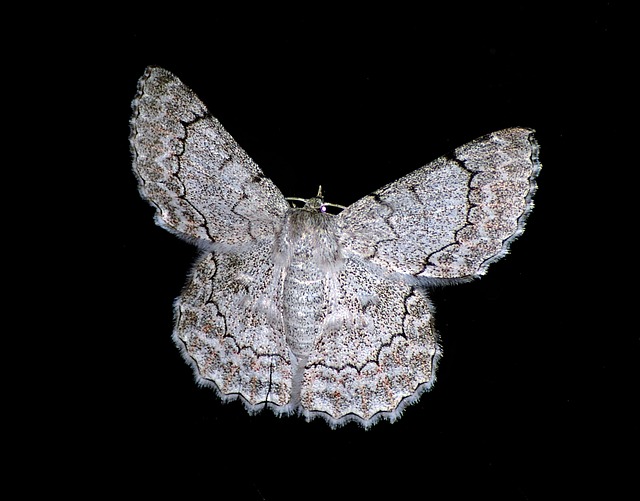Clothes moths are household pests attracted to dark, undisturbed areas with natural fiber fabrics. To deter them, maintain a clean, well-ventilated space and use eco-friendly solutions like lavender sachets, cedar blocks, and breathable cotton bags. Natural methods such as essential oils (lavender, tea tree, cedarwood) and herbs (sage, rosemary) are effective deterrents. Regular laundry practices, proper storage (airtight containers for vulnerable fabrics), and good ventilation significantly reduce moth presence, promoting an environmentally friendly lifestyle.
“Unraveling the secrets to a moth-free wardrobe! This comprehensive guide offers expert insights on tackling cloth moths, from understanding their peculiar behaviors and dietary preferences to implementing effective, eco-friendly storage practices.
We explore natural repellents, powerful cleaning methods, and preventative measures ensuring your clothes remain untouched by these fabric feeders. Discover the ultimate eco-friendly moth solutions and reclaim your closet today.”
Understanding Clothes Moths: Behavior and Diet
Clothes moths are a common household pest, often found in dark, undisturbed areas where their natural food sources—natural fiber fabrics—are stored. Understanding their behavior and diet is crucial when it comes to implementing effective, eco-friendly moth solutions. These moths are attracted to the keratin proteins present in materials like cotton, wool, silk, and even fur. They lay eggs within these fabrics, and the resulting larvae feed on the fibers, causing damage over time.
The adult moths are primarily nocturnal and are drawn to light sources, often entering homes through open windows or doors. Once inside, they use their strong sense of smell to locate suitable feeding grounds. By keeping your space clean, well-ventilated, and free from unnecessary clutter—especially items made of natural fibers—you can significantly reduce the appeal of your home to these pests.
Eco-Friendly Storage Practices to Deter Moths
When it comes to storing clothing, opting for eco-friendly practices can significantly reduce clothes moth attractants. Instead of relying on traditional chemical treatments, consider natural methods to deter moths. For instance, using lavender sachets or cedar blocks in storage areas can act as natural repellents due to their aromatic properties that moths find unappealing. Additionally, storing items in breathable cotton bags or containers allows for better airflow, reducing moisture levels—a prime condition for moth infestation.
Another effective eco-friendly storage practice is keeping your wardrobe and storage spaces well-ventilated. Proper ventilation discourages moth activity by preventing the buildup of humidity and heat, which moths require to survive and reproduce. Regularly air out your clothes before storing them and ensure that your storage areas are equipped with proper ventilation systems or fans to maintain a cool, dry environment. These simple yet powerful methods provide sustainable solutions to keep your garments free from moths while promoting an environmentally friendly lifestyle.
Natural Repellents and Cleaning Methods
Many natural repellents can act as powerful deterrents against clothes moths, offering a safer and more environmentally friendly alternative to chemical treatments. Essential oils like lavender, tea tree, and cedarwood are known for their moth-repelling properties; diffusing these oils or applying them to fabric can help keep moths at bay. Additionally, herbs such as sage, rosemary, and lavender sachets placed in closets or storage areas can create a natural barrier against moths.
When it comes to cleaning, regular and thorough laundry practices are essential. Wash items made of wool, silk, or other susceptible fabrics in hot water (at least 130°F/54°C) and use eco-friendly detergents free from harsh chemicals. Vacuuming floors, carpets, and furniture regularly will also help remove moth larvae and webbing. Steaming clothes can further reduce attractants, as it kills any eggs or larvae that may be present, preventing their transformation into hungry moths.
Preventative Measures for a Moth-Free Closet
To keep your closet free from clothes moths, it’s crucial to implement preventative measures that go beyond traditional pest control. One effective approach is to focus on natural repellents and storage practices. For instance, using lavender, cedar, or rosemary essential oils around clothing can act as a deterrent due to their strong scents that moths find unappealing. Eco-friendly moth solutions like these not only reduce the need for chemical treatments but also contribute to a healthier living environment.
Additionally, proper storage techniques are key. Clean and inspect your clothes thoroughly before storing them away. Remove any items that show signs of damage or infestation. Use airtight containers or bags to store clothing, especially those made of natural fabrics like wool or silk. By minimizing exposure to air and reducing potential food sources, you can significantly decrease the likelihood of attracting moths to your closet.
By implementing these expert tips on reducing clothes moth attractants, from eco-friendly storage practices to natural cleaning methods, you can take control of your wardrobe and bid farewell to unwelcome moths. Discovering simple yet effective solutions like keeping a clean, well-ventilated space and using lavender or cedarwood oil as natural repellents is a game-changer for maintaining a moth-free closet. Embrace these sustainable strategies to preserve your garments and enjoy a peaceful, pest-free environment.
